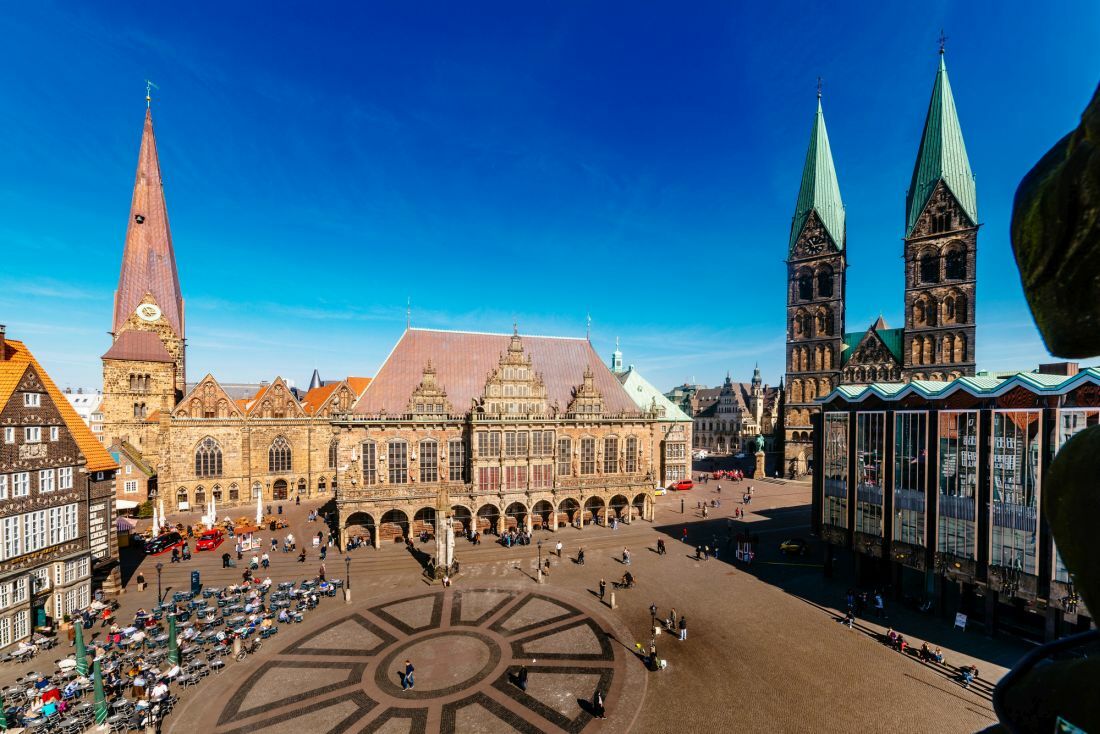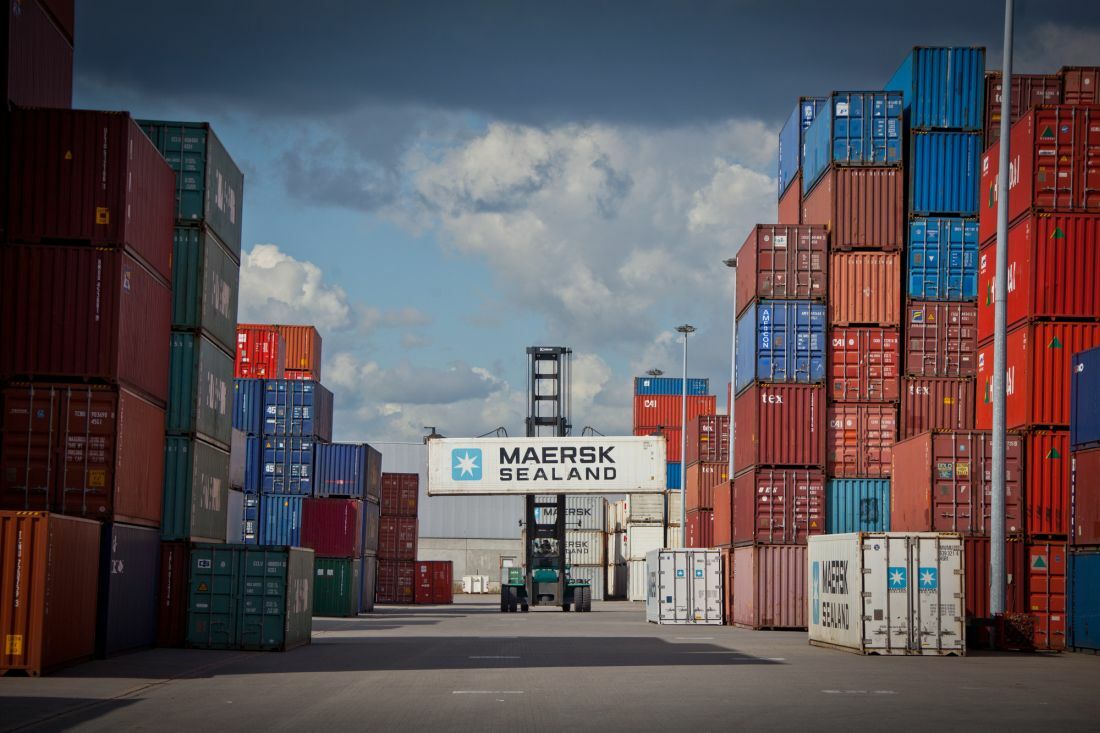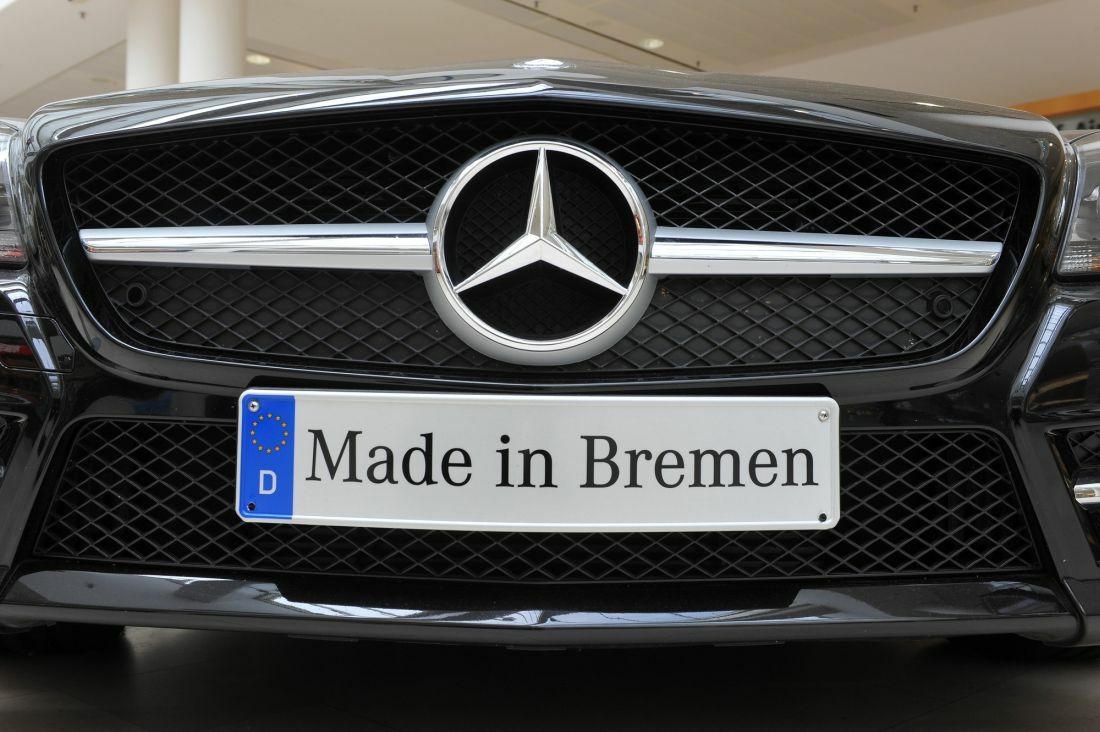A Centuries-Old Connection
Success storiesThe U.S.A. is the Free Hanseatic City of Bremen’s no. 1 foreign trade partner

In the U.S.A., there are 11 cities called “Bremen.” There is even a Bremen Island in Antarctica. But what do you know about the Free Hanseatic City of Bremen in Germany? George Washington, for example, was familiar with the city. In response to his personal request, the first American Consulate General in Europe was set up in Bremen in 1794.
A first glance
The Free Hanseatic City of Bremen is composed of two cities, namely the city of Bremen itself (population approx. 568,000) and the port city of Bremerhaven (population approx. 114,000). The two cities are 53 km apart, but together they comprise the German federal state that carries the official designation “Free Hanseatic City of Bremen.” While Bremen is located on the lower course of Weser River in northwestern Germany, Bremerhaven is further north where the Weser River flows into the Baltic Sea.
Today, the Free Hanseatic City of Bremen with its seaports is Germany’s second-largest port and foreign trade location, and its fifth-largest industrial site. The city’s GDP is significantly higher than the German average. More than half of the city’s industrial production is bound for foreign ports, around half of its imports and exports are traded with neighboring European countries, and the other half with partners around the globe. Bremen has the highest export rate of all German federal states. Traditionally, the U.S.A. is by far its most important foreign trade partner. The fourth-largest container terminal in Northern Europe is located in Bremerhaven, along with Europe’s largest port for car transshipment.
Stations in a transatlantic success story
Residents of Bremen initiated trade contacts with North America as early as the 1780s, when the Revolutionary War was still raging, and 1783 marks the beginning of direct transatlantic trade with the new nation. Since that time, the Free Hanseatic City has maintained a close relationship with the United States. In response to George Washington’s personal request, Europe’s first American Consulate General was set up in Bremen in 1794.
The first ship that entered the newly created port in today’s Bremerhaven in 1830 was an American schooner, the Draper. By 1854, Bremerhaven had become the largest migration port in Europe. To date, over eight million emigrants have set out for the New World from Bremerhaven’s Columbuskaje dock. In 1857, two merchants from Bremen founded North German Lloyd, a shipping company that offered regular passenger service to New York and Baltimore. And in 1890, the American John D. Rockefeller (Standard Oil) joined forces with three merchants from Bremen to found the German-American Petroleum Society, which later became the German company Esso, in Bremen.
At the end of World War II, Wesermünde and the Free Hanseatic City of Bremen were included in the American Zone of Occupation. From that time on, Bremerhaven was a port of embarkation for the US Army. Thus began the period in which American troop transporters called at Bremerhaven’s docks countless times. And since 1949, around 500 refrigerated ships (banana boats) have also discharged their cargo there upon arrival – around 5,000 times.
When a ship with over 1,000 American soldiers docked at Columbuskaje on October 1, 1958, an enormous crowd of reporters and onlookers came to greet it. The reason? Elvis Presley, the King of Rock ‘n’ Roll, was on board to begin his military service in Europe.
On May 6, 1966, the American ship Fairland unloaded the first container onto a German dock in Bremen’s international port, marking a revolution in sea freight transshipment.
1,200 years of Bremen’s history
Maritime shipping and trade – these are two constants in the more than 1,200-year history of Bremen. Located on water, Bremen was already a transshipment location for the traders who were active along the coast in the 8th century. A city soon evolved, one which has had its own market and right to mint and issue coins since 888. From the end of the 12th century, the citizens of Bremen could say they lived in a “free imperial city,” a privilege that reflected their economic success and along with it, an expansion in political power. Some years later, in 1260, the Free Imperial City of Bremen joined the Hansa, which was the most powerful economic alliance of the day.
New markets in focus
The alliance of (foreign) traders and later cities (Hansas) established more than 30 subsidiaries throughout northern Europe starting in the 14th century. More and more cities joined them, and soon they numbered 70 with numerous associated places as well. The powerful alliance maintained central Kontors (offices) in cities such as London, Bruges, Bergen, and Novgorod, in addition to dozens of other trading posts.
Within only a few decades, the members of the Hanseatic League and Bremen’s merchants with them had secured gigantic markets for themselves that stretched from England and Flanders to Scandinavia, Poland, and Russian principalities. By the middle of the 16th century, the trading fleet of Bremen alone encompassed around 65 ships. Bremen’s merchants continued to follow the strategy, even after the League’s later decline. Ultimately, they took a giant leap and established transatlantic contact.
Maritime economy and logistics

The history of Bremen and Bremerhaven has been shaped by the sea. Today, the federal state of Bremen is Germany’s second-largest port city with 1,300 companies in port industries and around 40,000 employees. In addition, around 34,000 jobs depend on the ports indirectly. Alongside maritime shipping, inland waterway transport plays an important role.
Together, the ports of Bremen and Bremerhaven are the fourth-largest container hub in Northern Europe. The masses of goods that are transshipped there must be processed further and/or transported, activities that require warehouse space and infrastructure. Five logistics centers located on almost 1,500 hectares of logistics area and more than 1,300 companies with 20,000 employees ensure smooth workflows via water, rail, road, and air. Beyond that, the freight center (GVZ) offers one million square meters of indoor area, making it Europe’s no. 1 – a location with an international ranking.
Cars as far as the eye can see: At Bremerhaven Auto Terminal, the largest in Europe, there are transport and storage spaces for around 120,000 cars. On an area of almost one million square meters, clever logistics master top transport connections. The ports function as a logistics hub for the entire automotive industry. Parts and kits travel from here to workshops around the world. Logistics specialists deliver them just in time or even just in sequence: directly to the assembly line or synchronous with production. And vehicles can also be converted for specific target markets and customers there.
Automotive

As a production location, Bremen has a significant place in the automotive industry: The first car factory was built here in 1906. In 1938, Carl F. W. Borgward opened his legendary car and engine factories in Bremen. Exactly one-half century ago (1971), Mercedes-Benz started producing along the Weser River.
Today, the Mercedes-Benz plants in Bremen have more than 12,000 employees and are the region’s biggest private-sector employer. As one of the largest Mercedes-Benz plants, the Bremen plant manages the global production of the C-class, the highest volume series, at the company’s foreign sites. Every year, around 400,000 cars roll off the belt in Bremen.
Automotive suppliers now create three-quarters of a car’s value, on average. Many of them are based in Bremen with large-scale production capacity, including the Hella Group, Lear Corporation, Brose Group, Kuka Group, and Schedl Automotive.
Wind energy and offshore
In a city by the sea, what could make more sense than to turn to the offshore and wind energy industry? With their specialization in break bulk, the local ports are key links in the chain. Research, development, service, and maintenance – companies in Bremen and Bremerhaven cover almost the complete value chain in the wind energy sector. This network offers top conditions for developing and operating onshore and offshore projects.
Food, beverages, and luxury foods
Cars are not the only things that enter Europe through Bremen’s ports. They are also Germany’s top import station for coffee. With a market share of around 50 percent, Bremerhaven is also Germany’s largest fish processing site. The city is often called “Europe’s freezer chest” because major food producers such as FRoSTA, Nordsee, Frozen Fish, and Deutsche See have their freezing and production halls here. By the way, FRoSTA and Frozen Fish produce their popular fish sticks for worldwide sale in the city by the sea. If placed side by side, the 2.7 billion fish sticks produced there every year would go around the earth five times. Together with the wholesale sector, the food, beverages, and luxury foods industry generates sales of around €2.6 billion per year. That makes it the Free Hanseatic City of Bremen’s second-largest industrial sector.
Aerospace
Back in 1909, three young pioneers of flight tested their homemade hang glider on the banks of the Weser River in Bremen. Almost two decades later, on April 12, 1928, the Bremen, a Junkers W33 airplane, took off from Baldonnel Airport in Ireland on the first successful transatlantic flight from east to west. The pilot made it from Dublin to Greenly Island in Canada in 36 hours.
In Bremen today, around 12,000 people are employed in the aerospace industry – a peak number when measured in terms of the total population. More than 140 companies, among them leading industrial companies such as the Airbus Group, the ArianeGroup, Rheinmetall, and OHB, call Bremen their home. In addition, the city is home to around 20 renowned research institutes such as the German Aerospace Center, the German Research Center for Artificial Intelligence, and Faserinstitut Bremen e.V. (FIBRE).
The wing equipment for Airbus airplanes, main stages for the European Ariane heavy-lift space launch vehicles, and GALILEO, the European satellite navigation system, are all produced in Bremen. The scientific laboratory Columbus and the ATV space transporter for the international space station ISS were built in the Airbus plant. And Bremen’s factory halls also saw the production of the European Service Module for NASA’s new Orion spacecraft.
Lightweight construction and materials engineering
Lightweight construction is a key technology for the aviation industry. The Center for Eco-efficient Materials & Technologies (ECOMAT) at the Bremen Airport is working on the technologies of tomorrow. Offices and rooms for technology and laboratories were built there to house 500 employees on an area of around 22,000 square meters. The collaboration and exchange encouraged at ECOMAT have led to spectacularly dynamic synergies in lightweight construction, additive manufacturing/3D printing, materials research, bionics, and sensor technology. Industrial partners, medium-sized enterprises, and renowned institutes have taken the reins here together in order to develop new process and products that will change the face of many sectors.
Science and research
With 36,000 students at eight universities, the federal state of Bremen has the highest academic density in Germany. Founded 50 years ago, the University of Bremen conducts research in five special research fields and at a national DFG Research Center. Next door in the technology park, scientists at prestigious institutes such as the German Aerospace Center and the Max Planck Institute for Marine Microbiology devote their work to topics of the future such as climate trends, marine biology, robotics, and space systems. Those at the three Fraunhofer Institutes specialize in production technology, medical imaging development, and wind power system technology.
The Free Hanseatic City of Bremen has also gained international fame as Germany’s largest center of marine research. Around 1,300 scientists explore the entire spectrum of their field here, which includes practical disciplines such as offshore and underwater technology, maritime metrology and environmental technology, and ice and polar technology. The “champions” among these institutes include the Alfred Wegener Institute, the University of Bremen’s MARUM center, the German Research Center for Artificial Intelligence, and the Institute of Shipping Economics and Logistics.
The universities in Bremen and Bremerhaven have an international student body. Around 12,000 students from around the globe benefit from hundreds of cooperation agreements with academic partners worldwide and practical semesters abroad.
Our Bremen
The citizens of Bremen are said to be cosmopolitan, warm-hearted, and open to new people and things. The venerable trading and port city with a history that goes back more than 1,200 years has developed into an urban center that addresses the major themes of the future.
For immigrants and emigrants Bremen has always been and still is well-known. But the best-know inhabitants remain the Bremen Town Musicians. A bronze sculpture of the donkey, dog, cat, and rooster – the protagonists of a Grimm’s fairy tale – is situated next to Bremen City Hall. As Bremen’s landmark, they remind visitors from around the globe of their story, which is all about courage, friendship, optimism, and ingenuity.
Success Stories
The history of space travel in Bremen
Small circle, big impact: With the founding of the “Development Ring North” (ERNO) in July 1961, Bremen began its development into one of the world’s leading spaceflight locations. Even the return of humans to the Moon would hardly be possible without technology from the Hanseatic city.
Learn moreMedium-Sized Companies in Bremen Showcasing the Full Range of the Local Economy
Medium-sized companies form the backbone of Bremen’s economy. They create jobs and produce goods that are in demand worldwide. Here is a selection of ten businesses that illustrate the diversity of Bremen’s economic landscape.
Learn moreMeasure, Test, Inspect – 11 Examples of Precision Engineering from Bremen
Not many people could name a manufacturer of metrology and testing equipment, but without their products we would not have space probes, aircraft or medical equipment. And Bremen is home to a whole host of these specialist companies.
Learn more
